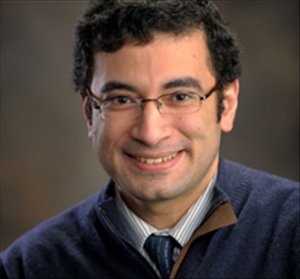Warren Lecture with Ahmed Elbanna
“Building the Earthquake Virtual Machine: Towards modeling sequence of earthquakes and aseismic slip (SEAS) with high resolution fault zone physics”
ABSTRACT: An active fault zone is home to a plethora of complex structural and geometric features that are expected to affect earthquake rupture nucleation, propagation, and arrest, as well as interseismic deformation, energy partitioning, radiation patterns, and focal mechanism interpretation. Due to the conundrum of scales involved in this problem, new advances in modeling, experiments, and field measurements are needed to reveal the interplay between fault zone inhomgeneities and source physics. In this talk, Elbanna applies FEBI, a hybrid finite element (FE)-spectral boundary integral (SBI) scheme, to explore modeling seismic and aseismic slip with high resolution fault zone physics. FEBI combines FEM and SBI through the consistent exchange of displacement and traction boundary conditions, thereby benefiting from the flexibility of FEM in handling problems with nonlinearities or small-scale heterogeneities and from the superior performance and accuracy of SBI. Time adaptivity to bridge the seismic and interseismic periods is achieved by implementing an alternating dynamic-quasidynamic formulations. Exact near-field truncation of the elastodynamic and elastostatic fields, enabled by the boundary integral formulation, allows FEBI to strategically allocate computational resources in a narrow region surrounding the fault zone that encompasses the small scale geometric or material complexities. Elbanna briefly presents three example applications of this new modeling framework: (1) Modeling dynamic ruptures in a fault zone with multiple discrete small-scale fractures, (2) Modeling of sequence of earthquakes and aseismic slip on a fault surface with evolving off-fault viscoplasticity, and (3) Modeling of sequence of earthquakes and aseismic slip on parallel faults that communicate with one another. The results suggest that fault zone pre-existing or evolving heterogeneities may significantly alter rupture characteristics, including rupture speed, energy dissipation, and high frequency generation, as well as seismicity pattern and fault stability. Elbanna discusses the implications of these results on the need for an integrated modeling-observation framework for understanding the co-evolution of fault, rheology, and stress in fault zones.
